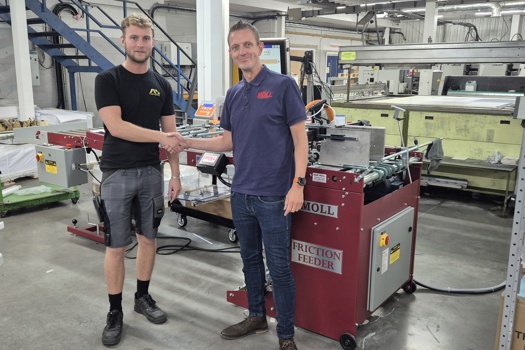The white paper looked at used sheetfed presses from five manufacturers, and found that that Heidelberg presses produced higher volumes of print annually than competitor machines on average. It stated that “the profit opportunity for Heidelberg machines is significantly higher than for competitive models.”
However, Klaus Schmidt, Koenig & Bauer director of marketing and corporate communications, denounced the findings.
He told PrintWeek: “It seems that the Smithers Pira study has been ordered as a white paper with the target to reach the published result. The number of prints per year is no clear indicator for the productivity of a press. It depends on the press configuration (number of colours, inline finishing equipment, straight or perfecting), structure of the print jobs produced (long or short runs, standard or sensitive substrates, good enough or high-end quality), the qualification and motivation of the press crew and the business model of the print shop (one, two or three shifts).”
Schmidt said Smithers Pira had not contacted Koenig & Bauer for a statement before publishing the white paper. “So, it’s easy to influence the result of a study on secondhand machines by the selection of presses involved. Fair play looks different.”
Heidelberg head of global marketing Andy Rae confirmed to PrintWeek that the manufacturer had paid for the study because it wanted third-party validation of data that it had been gathering itself.
“We’ve got two years of data and our own data is even better than the snapshot Smithers Pira has used. We paid for the report because we couldn’t believe the difference we were seeing in real-life productivity. We monitor the used machines that are coming onto the market and make that calculation, because it’s the only figure that’s fair,” Rae stated.
“This is the sort of data people should be measuring, and that gap is only going to get wider as we increase the amount of integration and roll out Push to Stop,” he added.
Rae also tackled the issue of servicing costs raised by M Partners managing director Murray Lock, in response to the white paper.
“Service costs are included in the cost rate, as is insurance. This is easily outstripped by the fact that productivity is three times more important than the cost of the machine. Industrial printers understand this," he said.
“People are buying machines to produce a certain number of sheets per year, and there is a total correlation to cost per sheet. I think it’s very robust data.”
At the time of writing Komori and Manroland Sheetfed had yet to respond to requests for comment.
Smithers Pira described the methodology behind the report as following the approach taken by many printers “in a similar manner to Budgeted Hourly Rate calculations”.
“It incorporates elements including capital and financing costs using typical prices paid in the industry, energy usage, service and repairs (related to the cost of the press) and direct labour on a specific shift pattern. It then adds in paper cost and waste (set up and running), cost of plates, productivity metrics at various ink usage settings with or without coatings”.
The full report can be downloaded here.










